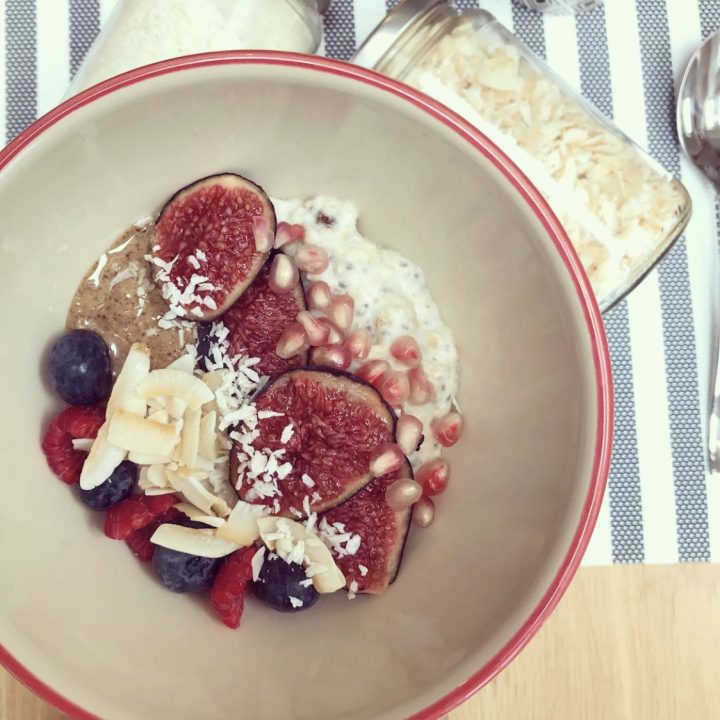
Living in tune with the Seasons
30th August 2022
Can Food boost Mood?
12th September 2022As the seasons change, so does the way we live our lives. Generally, in the spring / summer months; with longer days and lighter nights, we tend to have more motivation to be active, socialise and get stuff done! Often, when the autumn / winter months hit, hibernation mode kicks in and cosy nights on the sofa feel a lot more appealing. This is us living in tune with the seasons, along with our internal body clock (circadian rhythms) sending us signals for when it is time to be active and time to rest.
Another great way to live in tune with the seasons is through our dietary choices and what we decide to eat, when. It’s exciting that as the seasons change, so do our options for fresh and flavoursome, local produce. However, often, due to the wide variety of food that is available in the supermarkets all year round, it is easy to continue eating berries in December and butternut squash in June, without a thought for where the food has come from and how far it has travelled.
We’re creatures of habit; often our shopping list is similar each week as we continue to choose what we are familiar with. There’s nothing wrong with this – of course we need to consider what is convenient, easy to make and affordable for our overall lifestyle alongside being mindful of our nutrition. However, due to the fact it is (usually) so simple to transport food long distances, it’s easy to find ourselves unfamiliar with which foods are in season where we live, and why they can be beneficial.
Why eat seasonal?
For the nutrients
Seasonal eating provides us with the freshest and most flavoursome produce all year round. Often, when eating in tune with the seasons where we live, our food has not been transported long distances, meaning it has less time on the shelves / in transit and we can consume it when it’s at its most nutritious. This can also make it less likely for the food to contain traces of chemicals which are sometimes used to artificially ripen produce for its journey.
For the local businesses
Seasonal food is often locally grown, meaning when we buy seasonal from a smaller scale local store, we are supporting these independent businesses or sustainable farming practices rather than larger supermarkets with shelves stacked high of all types of produce all year round.
For the environment
The less we need to transport our food, the less pollution created on its journey, the better it is for the environment. Often, when seasonal food has not travelled far, there’s not as much of a need for plastic packaging / wrappers. Another positive sustainable step!
For the purse strings
Because seasonal food is in abundance, it is more accessible and often cheaper. Notice the price of strawberries, for example, change from the summer months to the winter. Due to the fact that they are easier for shops to get a hold of in the summer, and there are more of them around – they don’t need to be as expensive.
For the excitement!
We need a variety of food in our diet both for health purposes and to keep our meals exciting! Because the seasons are ever changing, eating seasonally encourages us to eat a wider variety of foods. Most supermarkets tend to stock the same produce because of the demand, cost, and their ability to ship and store well. Eating in tune with the seasons encourages that all important diversity.
So, what’s in season, when?
See below a list to some of the foods which are in season at certain times of the year. Hopefully this will be a helpful guide when heading to the shop in the coming weeks. Remember, this isn’t to say you must only buy seasonal produce; it’s about becoming more aware and supporting local. See if you notice a difference in the taste, quality and price or if shopping seasonally makes a positive difference to you as an individual.
Spring
Cabbage, Leeks, Broccoli, Kale. Carrots, Potatoes, Mushrooms, Salad leaves, Peas and Broad beans, Peppers, Apples, Pears, Apricots
Summer
Asparagus, Watercress, New potatoes, Cabbage, Beetroot, Broccoli, Courgette, Tomatoes, Peppers, Celery, Cauliflower, Green beans, Strawberries, Raspberries, Peaches
Autumn
Sweetcorn, Leeks,, Pumpkin, Squash, Brussels sprouts, Cauliflower, Broccoli, Beetroot, Parsnip, Mushrooms, Tomatoes, Turnip, Plums, Blackberries, Apples, Pears, Cranberries
Winter
Celeriac, Mushrooms, Brussels sprouts. Red Cabbage, Swede, Beetroot, Parsnips, Leeks, Cauliflower, Celery, Rhubarb, Pears, Cranberries, Apples
Hope it helps!




